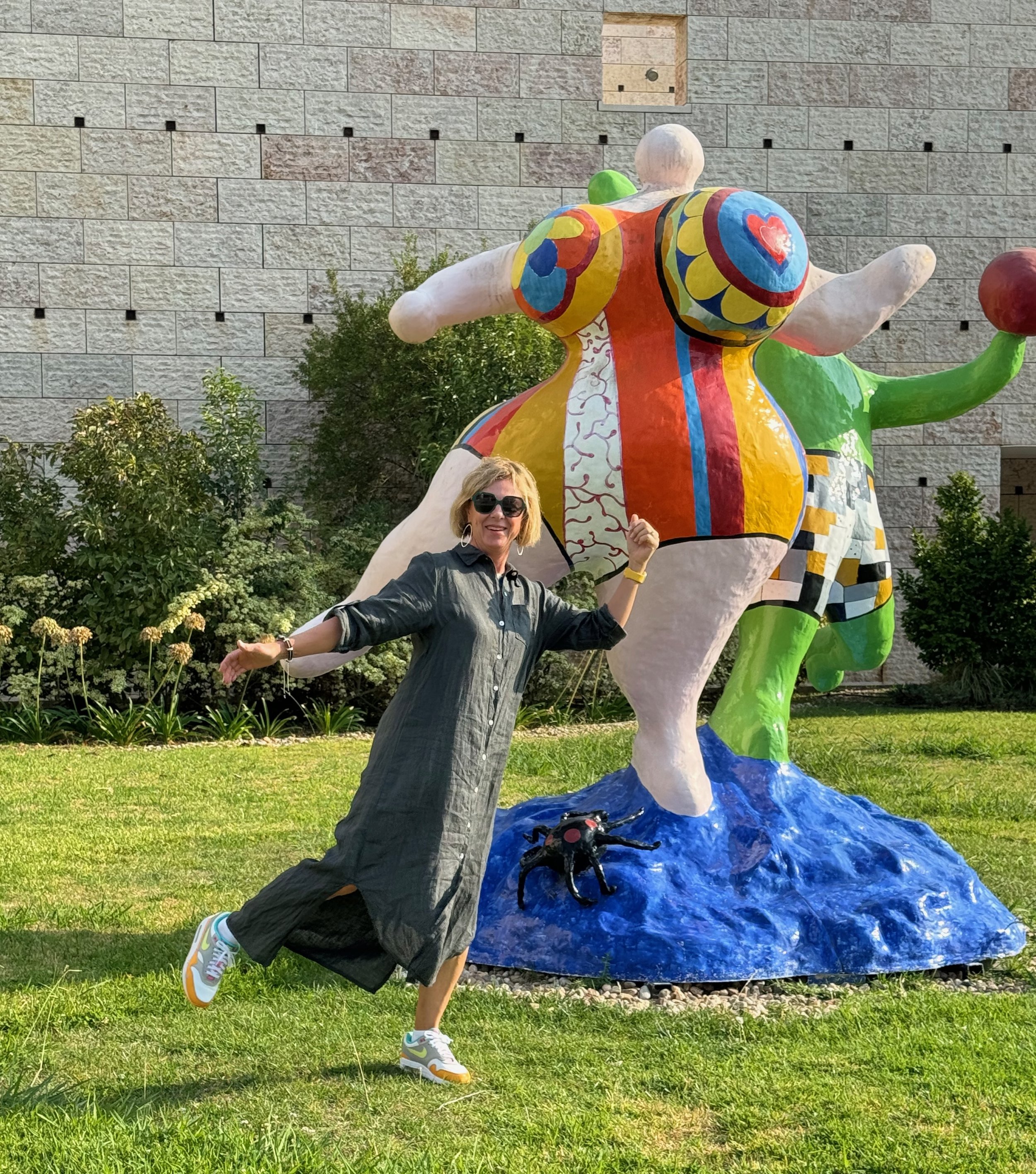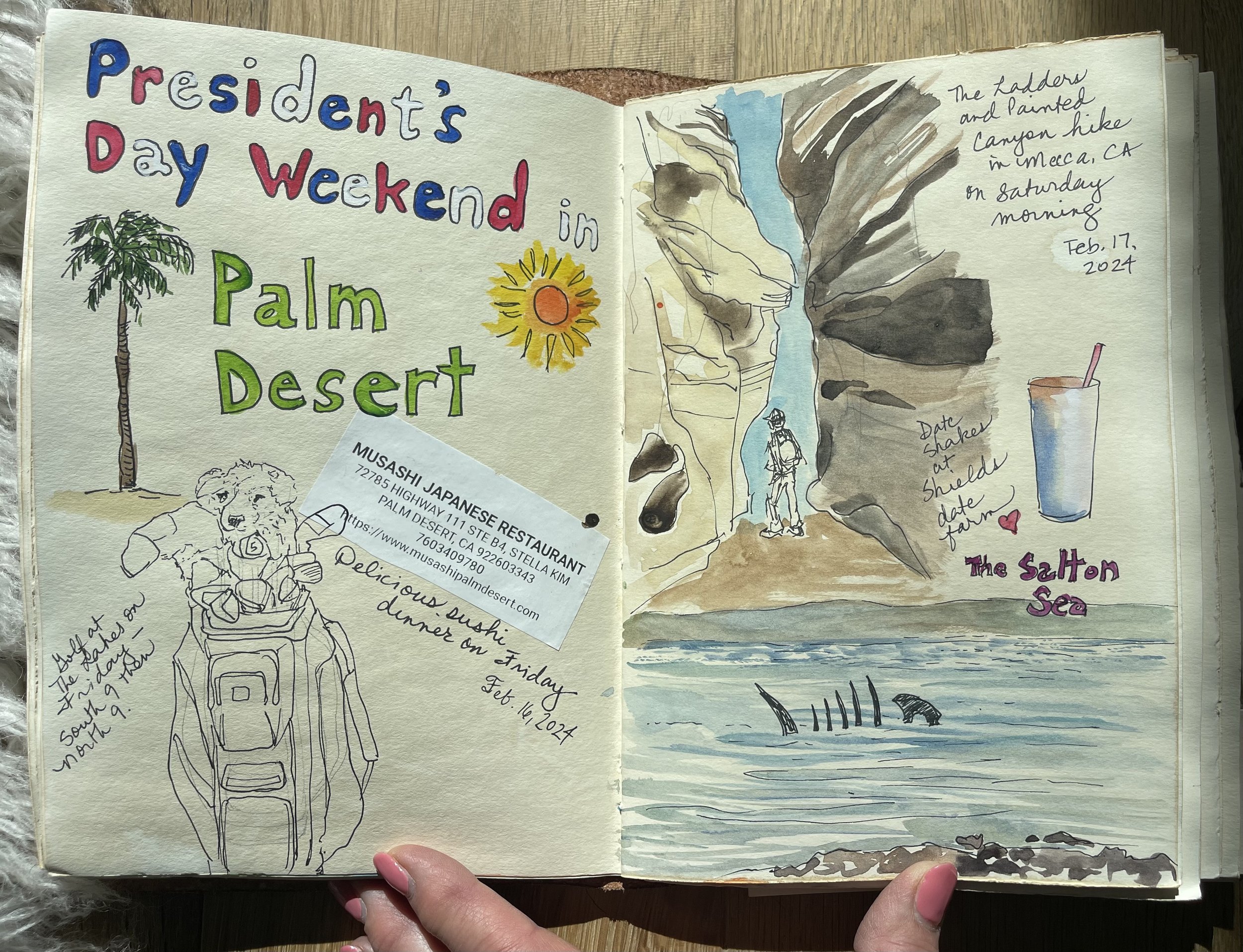Hello again after a short hiatus. I took a wonderful trip to Portugal and France last month, and just before leaving, I wrote a newsletter about Showing and Telling. I posted it to my website, but alas, I didn’t quite have time to send it out as an email. Read it here. It features a painting and a poem about Malibu. In the poem, I tried to capture the ineffable quality of a place that will always be a part of me.
The reason for the Portugal trip was the wedding of our friends’ son Harry to his bride Luiza. It was a joyful, memorable day, with the ceremony in a Baroque basilica and the reception at a villa on the water. Principle to live by -- never pass up an opportunity to celebrate life’s important moments with friends and family! Every trip has to include art, too, of course. So in Lisbon, we visited the MAC/CCB Museum of Contemporary Art, which opened less than a year ago. Here’s me, joining in with Niki de Saint-Phalle’s “Les Baigneuses.”
This sculpture is just ASKING for a little interaction! At MAC/CCB Lisbon.
The museum is vast, and we spent the whole afternoon walking through it. One of the exhibits was called “Or the Continuous Drawing,” and featured drawings in the broadest sense, from a tree branch as line, to precisely cut and rearranged paper pieces, to highly rendered figurative works like this beauty, by Scott Hunt, called “Bobbie and the Gazing Ball.”
I loved a lot of the drawings in the show. Some of them, though – if you took away the frame and the museum setting, you’d think they were just doodles from the recycle bin. Such is the mystery of what is “art,” and what is “good.”
Thinking about this drawing show reminded me how freeing it can be to draw. The process is such an idea-generator. You can draw whatever or whomever is in front of you, or you can draw something out of your imagination. You can draw fast and loose, and cover a lot of pages. Drawing is low stakes in the best way. It’s (often) just erasable marks! It’s just paper, not a precious canvas! Drawing feels like touching with your eyes and then translating that touch into your hand’s motion. Magical.
Since I’m studying French - more on that obsession in a future newsletter - “à la prochaine!”














